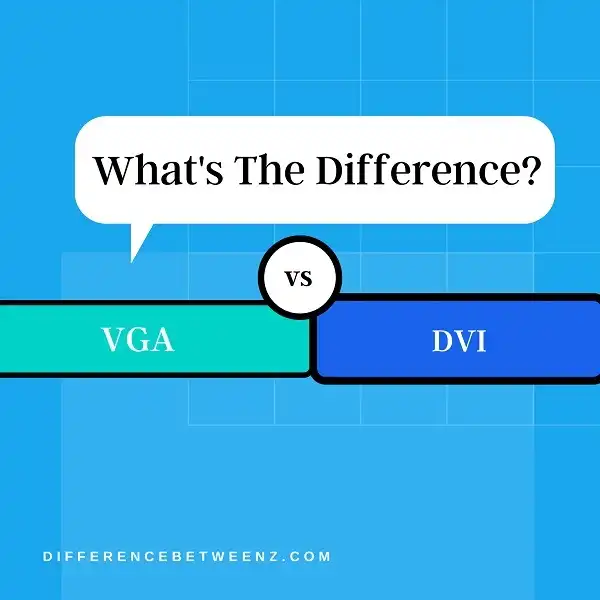There are a few different types of video connectors out there, and it can be confusing to know which one to use. In this post, we’ll take a look at the difference between VGA and DVI connectors. We’ll also discuss when each type is appropriate. Let’s get started!
What is VGA?
VGA is an analog video signal connection format typically used to connect computers to monitors or projectors. The VGA connection consists of three rows of five pins, arranged in a rectangle. These pins carry the red, green, and blue video signals, as well as the horizontal and vertical sync signals. VGA is also sometimes referred to as RGB since those are the colors that it carries. While VGA has been superseded by digital formats like DVI and HDMI for most PC applications, it is still commonly used for connecting laptops to projectors and other analog displays. Many newer laptops still have a VGA port built-in, even though they also offer digital connections. This is because there are still a large number of projectors and other display devices that only support analog input.
What is DVI?
DVI is a digital video interface that is used to connect computers and displays. It supports high-resolution video and can be used with displays that have DVI-I, DVI-D, or DVI-A connectors. DVI-I supports both digital and analog signals, while DVI-D supports digital signals only. DVI-A supports analog signals only. DVI uses TMDS (Transition Minimized Differential Signaling) to transmit video data. TMDS encrypts the video signal to prevent interference from other electronic devices. DVI cables are available in lengths up to 15 feet (5 meters). Active DVI cables are also available, which use built-in electronics to boost the signal over longer distances. DisplayPort is a newer standard that is backward compatible with DVI. However, DisplayPort cables are not compatible with DVI connectors.
Difference between VGA and DVI
VGA and DVI are two types of video cables that are used to connect computers to monitors or TVs. VGA is the oldest and most common type of cable, while DVI is newer and supports higher resolutions. VGA cables have 15 pins and can carry an analog signal. DVI cables have 24 or 29 pins and can carry both digital and analog signals. DVI offers better image quality than VGA, but it is not compatible with all monitors. Many newer monitors only have HDMI inputs, so you will need an adapter to use a DVI cable. VGA is still widely used because it is cheaper and more compatible than DVI.
Conclusion
So, what’s the difference between VGA and DVI? In short, VGA is an analog signal and DVI is a digital signal. This means that with a VGA cable, you lose some of the image quality in order to send it across the wire. With a DVI cable, there is no loss of image quality because it’s a digital signal. If you have a newer computer or monitor, you likely have a DVI port on it – so make sure to use a DVI cable if you want the best possible picture!


